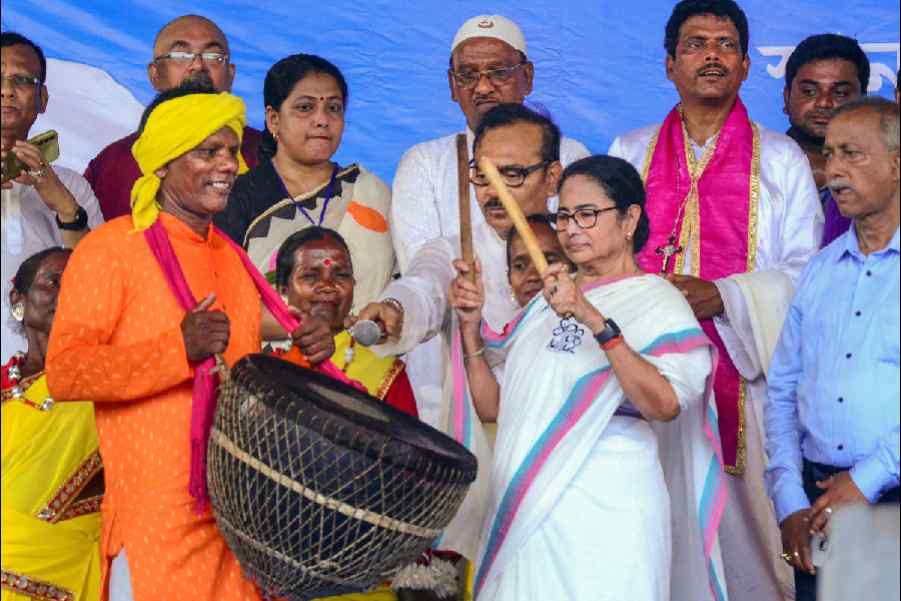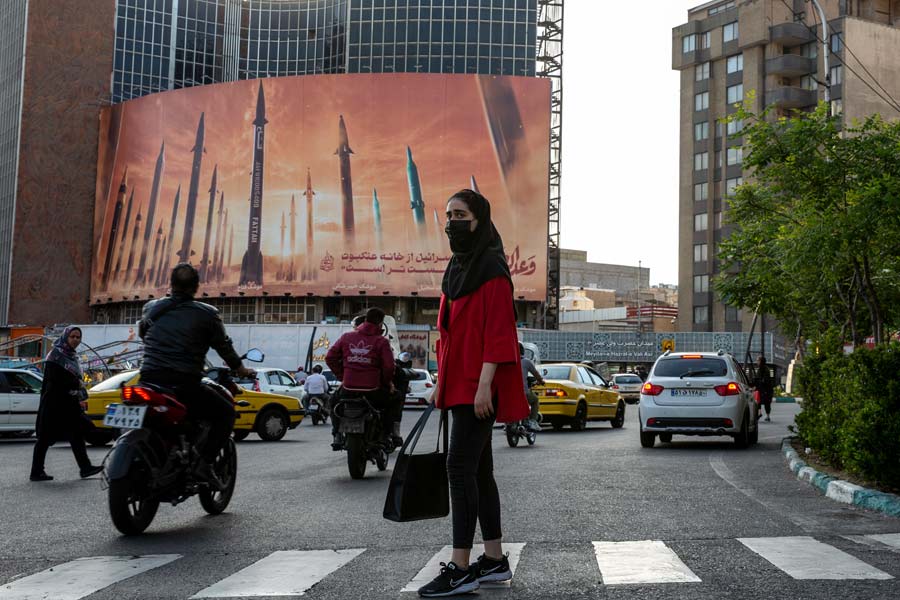The lockdown has prompted a young architect from Calcutta to create a series of doodles, his subjects ranging from ubiquitous household objects that don’t get much attention to the plight of migrant labourers.
One illustration shows a pair each of slippers and formal shoes. “Feels like a dream! Never before have I been more in demand,” says the first pair. “I feel like a voter! Completely forgotten after the elections,” says the second.
Another shows a man opening the door of a fridge, stacked with food and beverages. In the same frame, another forlorn-looking man is sitting under a tree. In the background are silhouettes of a woman and a baby, with bags strewn in front. “What will it be,” says the common caption.
The illustrations have been generating a fair amount of online traction. They have been shared many times on Facebook and garnered hundreds of Instagram likes and comments.
“This lockdown is unprecedented. Confined in our homes, our lifestyle has changed. There are the things we are using so much now. There are other things that are lying unused. I started thinking what if these objects, most of them inanimate, could speak. What would they tell each other? That was how this series happened,” Arpan Mazumder, 34, told Metro over the phone from Delhi, where he is now settled with his wife.

One of his doodle
The paintings are bright, simple and funny. They are based on different homely subjects and each work has a small story. The only common factor is the backdrop of the nationwide shutdown forced by the novel coronavirus.
If the sketch on shoes focuses on the work from home culture, another deals with watering plants — a hobby picked up by many during the lockdown. The doodle shows two house plants, one of them a cactus. “All this extra love and care. May this time never end,” says the plant. “But this extra water every day is killing me,” replies the cactus.
Mazumder did his schooling in Chittaranjan — his father was a railway employee posted in Chittaranjan Locomotive Works — and studied architecture in Jadavpur University. He worked for a year in Calcutta before doing his master’s from the School of Planning and Architecture in Delhi. He has since been working in the capital. His parents and a younger sister live in Kudghat.
Mazumder loved painting as a boy and trained under a “mastermoshai”. But “had to let go because of the academic pressure” as he neared his secondary and higher secondary exams. His passion made a comeback when he studied architecture and started his professional life.
He started a Facebook page called Doodle Bhai in July last year. The page now has over 650 followers on Facebook.

The paintings are bright, simple and funny. They are based on different homely subjects and each work has a small story.
One of his first albums was titled Nostalgia.
His latest albums were not planned as a series. He made individual illustrations — during his free time between virtual meetings and other official work being done from home — and posted them on Facebook. “I got encouraged by the response. Many people egged me on to create a new album,” said Mazumder. The album based on household objects has 19 illustrations and is titled Lockdown Conversations. Another album is called A-Z of Lockdown.
The one on migrant labourers is called Perspective.
The illustrations compare the lives of labourers with the lives of the privileged. The people who worked the hardest before the lockdown are now suffering the most,” said Mazumder.
In the past, Mazumder has made illustrations highlighting topical issues like crimes against women and the secular fabric of India. An illustration shows many faces on one canvas — faces from all faiths and backgrounds.










